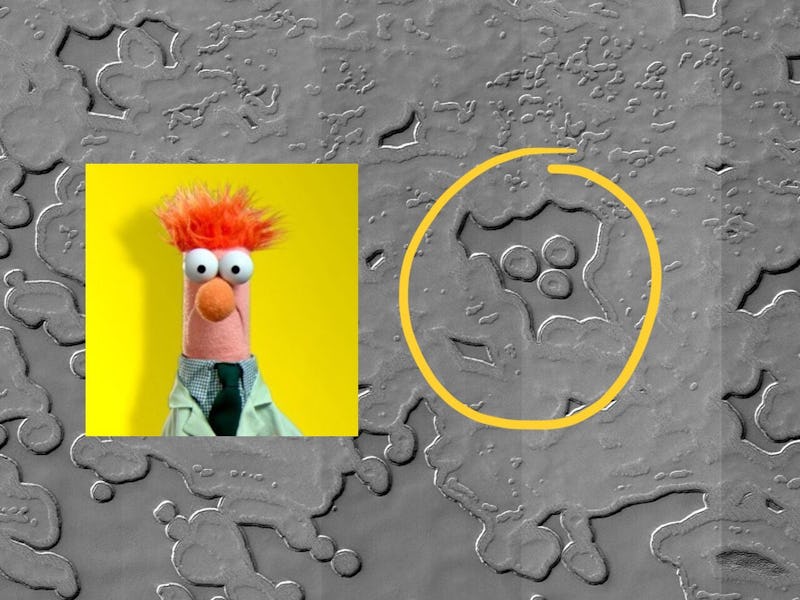Muppets in Space? NASA’s High-Res Image of Mars Comes With Pareidolia
Finally, justice for Beaker.

Sorry, Elon Musk, but Beaker is now the first scientist to colonize Mars. NASA published a high-resolution photo of a dust storm on Mars’ south pole, revealing a case of pareidolia, the psychological phenomenon of seeing faces or shapes in unrelated objects. The appearance of Beaker was so well-defined in the Martian landscape that even the agency couldn’t deny his appearance. Meep.
On Monday, NASA’s Mars Reconnaissance Orbiter spotted the Beaker-looking geological formation while carrying out its usual mission of photographing the red planet with the intention of choosing landing sights for future surface missions. Thanks to the High Resolution Imaging Science Experiment camera, aka HiRISE, the largest reflecting telescope ever carried on a deep space mission, the space agency confirmed that buried deep within the polar dust storms is the facial imprint of Beaker, the beloved muppet scientist created by Jim Henson in 1977.
Beaker could use a win. Since his debut on The Muppet Show, the “meeping” assistant to Dr. Bunsen Honeydew has been the perpetual victim of every science experiment gone awry at Muppet Labs. After seasons of being zapped, shrunk, and blown up, Beaker’s fellow castmate Kermit the Frog poignantly observed, “If somebody has to get hurt, it’s almost always Beaker.” He truly deserved to be the first muppet in space.
Thanks to HiRISE’s frequent output of Martian close-ups, the red planet has been a hotbed of pareidolia lately. The telescope and Mars Rover have offered the appearance of space millipedes and rock formations that resemble Jabba the Hut. The psychological phenomenon is pervasive throughout space, ranging from “the man in the moon” to the USS Enterprise in a distant nebula, and is arguably why the constellations are named after their imagined earthly likenesses.
After a decade of recording Mars’ unusual landforms and weather patterns, the Mars Reconnaissance Orbiter continues to reach milestones by sending terabytes of new Martian data. It’s uncertain if the rest of the muppets will join Beaker, but given Mars’ volatile weather patterns and geological diversity, there has to be at least a Gonzo there.